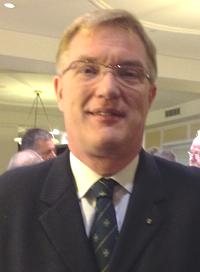Edward McNabb, a trailblazer in the fields of conservation bioacoustics and nocturnal ecology, passed away on May 7th at the age of 81. Renowned for his pioneering research that advanced the understanding of animal behavior after dark and the use of sound in wildlife monitoring, McNabb’s contributions have left an enduring legacy in ecological science. His work not only deepened scientific knowledge but also informed conservation strategies worldwide. Butler Nature reports on the life and impact of this influential figure whose innovations continue to resonate across environmental research communities.
Edward McNabb’s Legacy in Conservation Bioacoustics Advances Understanding of Nocturnal Wildlife
Edward McNabb’s groundbreaking work in conservation bioacoustics revolutionized how scientists study nocturnal wildlife. By harnessing advanced sound recording technologies and pioneering analytical methods, McNabb opened a window into the secret lives of elusive species active under the cover of darkness. His extensive field research shed light on complex communication patterns among bats, owls, and other night dwellers, enabling conservationists to develop more targeted strategies to protect these vulnerable populations. His legacy is not only in the data collected but also in the global network of researchers inspired by his methodology.
McNabb championed an interdisciplinary approach that combined ecology, acoustics, and technology, which led to key breakthroughs such as:
- Automated acoustic monitoring systems that detect subtle changes in biodiversity.
- Real-time data analysis techniques facilitating rapid ecosystem assessments.
- Community-driven conservation protocols integrating local knowledge with scientific findings.
His contributions continue to underpin efforts in safeguarding nocturnal species, particularly amid escalating environmental threats. Below is a snapshot of some pivotal innovations introduced through McNabb’s work:
| Innovation | Impact on Conservation | Year Introduced |
|---|---|---|
| Ultrasonic Recording Devices | Enabled detailed bat call catalogs | 1985 |
| AI-based Sound Identification | Improved species recognition accuracy | 2003 |
| Remote Habitat Acoustic Surveillance | Enhanced long-term ecosystem monitoring | 2012 |
Innovations in Nighttime Ecology Research Inspired by McNabb’s Pioneering Work
McNabb’s groundbreaking approaches have redefined how researchers study nocturnal ecosystems, ushering in a new era where soundscapes speak volumes about biodiversity after dark. By integrating advanced bioacoustic technologies with ecological monitoring, McNabb’s work enabled scientists to capture elusive behaviors of nocturnal species without intrusive methods. His innovations led to the development of autonomous recording units capable of collecting continuous nighttime data across diverse habitats, dramatically improving the resolution and scale of wildlife surveys.
These tools now underpin an expanded toolkit that includes:
- Machine learning algorithms for automated species identification
- Real-time acoustic monitoring networks enabling rapid conservation responses
- Multisensor platforms combining audio with thermal imaging for richer ecological insights
| Innovation | Impact | Current Application |
|---|---|---|
| Autonomous recording units | Expanded data collection capabilities | Long-term ecosystem monitoring |
| AI-driven species ID | Accelerated data analysis | Rapid biodiversity assessments |
| Acoustic-thermal hybrids | Enhanced detection accuracy | Behavioral ecology studies |
Recommendations for Future Conservation Efforts Building on McNabb’s Scientific Contributions
Building on McNabb’s groundbreaking work in bioacoustics and nocturnal ecology, future conservation initiatives should prioritize the integration of advanced sound monitoring technologies with traditional field research. The continuous development of automated recording units, combined with machine learning algorithms for species identification, promises to revolutionize how we detect and protect elusive nocturnal fauna. Conservationists are urged to establish regional acoustic baselines to track biodiversity shifts in real time, particularly in habitats vulnerable to rapid environmental changes. This approach will not only enhance species inventories but also enable proactive measures against emerging threats such as artificial light pollution and habitat fragmentation.
Moreover, fostering interdisciplinary collaborations remains essential to amplify McNabb’s legacy. Ecologists, technologists, policymakers, and local communities must unite around a shared vision that values soundscapes as critical ecological indicators. Key recommendations include:
- Expanding bioacoustic monitoring networks to cover under-surveyed nocturnal environments worldwide.
- Implementing community-based conservation programs that incorporate traditional ecological knowledge and soundscape stewardship.
- Enhancing funding streams dedicated to technological innovation in low-impact monitoring tools.
| Action Item | Expected Impact | Priority Level |
|---|---|---|
| Develop regional acoustic databases | Improved species monitoring accuracy | High |
| Promote nocturnal habitat restoration | Enhanced biodiversity resilience | Medium |
| Launch public awareness campaigns | Increased community engagement | High |
Future Outlook
Edward McNabb’s passing marks the end of an era for conservation bioacoustics and nocturnal ecology. His pioneering work not only advanced scientific understanding of nighttime ecosystems but also inspired a generation of researchers dedicated to preserving the natural world after dark. As the field continues to evolve, McNabb’s legacy will remain a guiding light for future conservation efforts. Butler Nature extends its deepest condolences to his family, colleagues, and all who were influenced by his extraordinary contributions.
